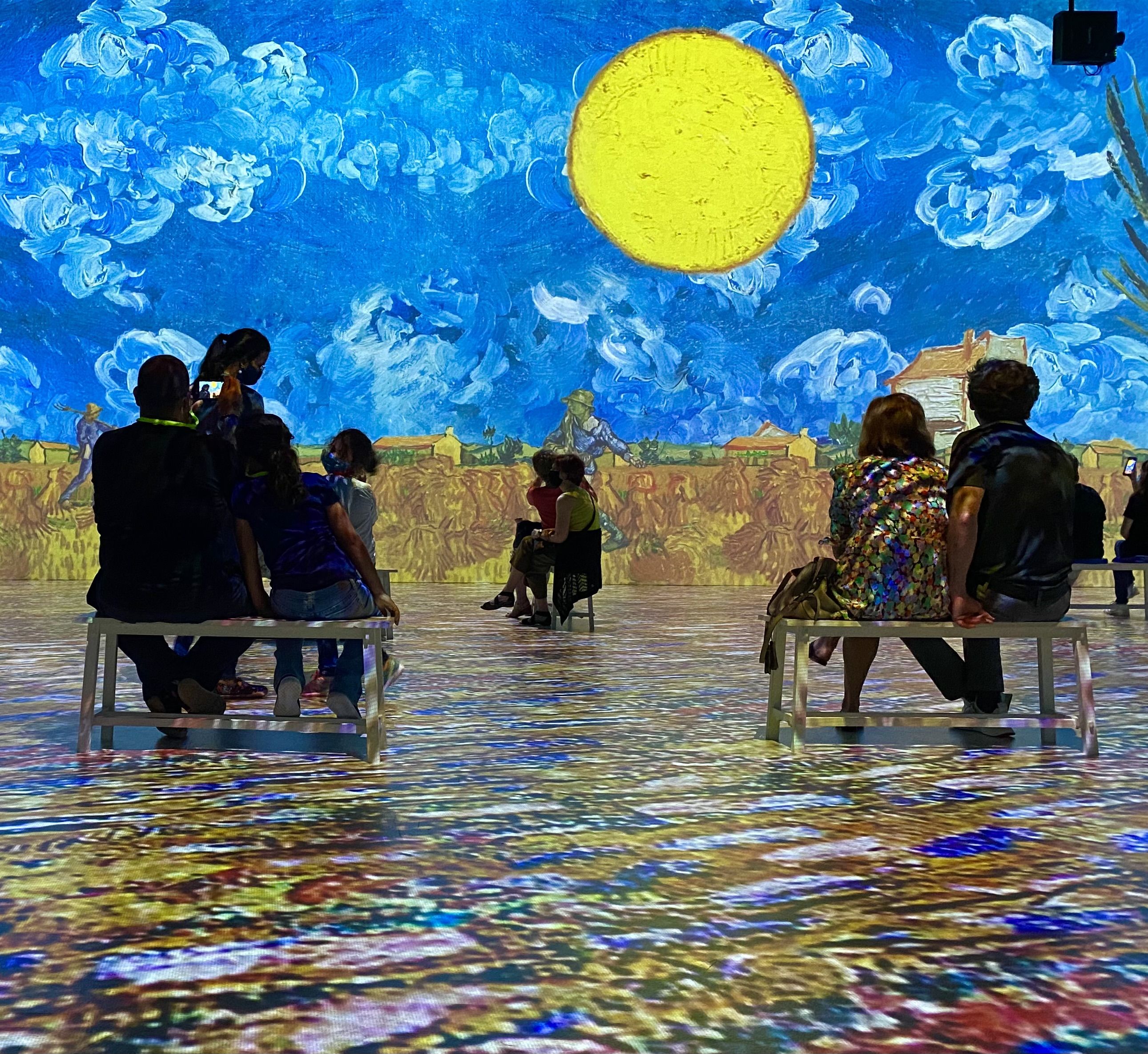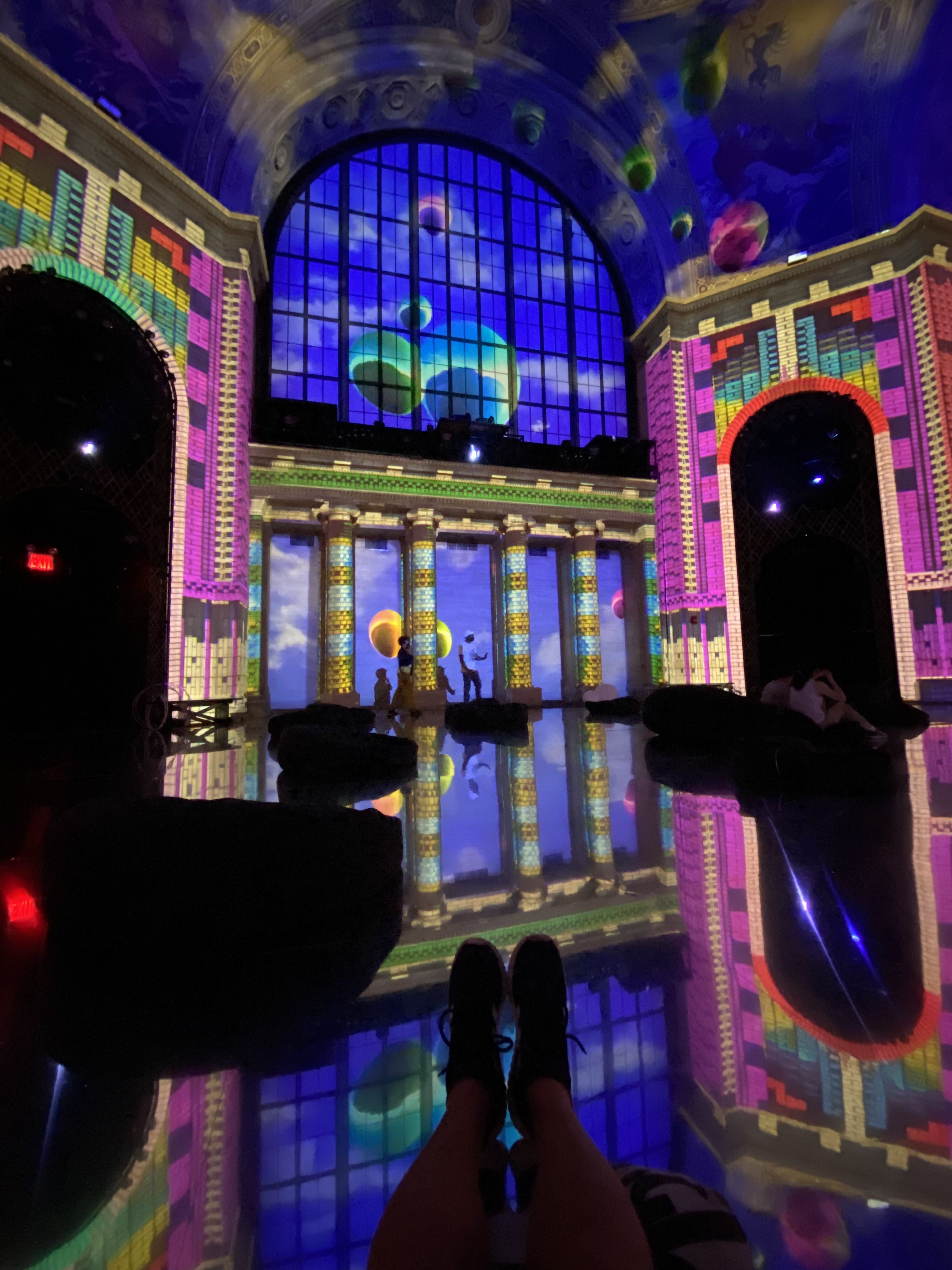Attendance is sluggish at movies and museums, but people are flocking to "immersive" shows that let them walk around (virtually) in a Van Gogh painting, King Tut's tomb or a surreal fantasy world.
Why it matters: People are yearning to ditch their sofas and phone screens for transcendent experiences that let them move around and mingle, untethered from a theater seat or virtual reality headset.
Driving the news: The surprise popularity of the half-a-dozen competing immersive Van Gogh exhibitions that hit the U.S. during the COVID-19 pandemic helped open the floodgates for similar shows, which make world-class art and artifacts more accessible and engaging.
- Advances in projection mapping enable producers to build dazzling spectacles.
- "You walk in and become transported to another world," says Gilles Paquin, CEO of Paquin Entertainment Group, which is behind the "Beyond King Tut" show that just opened in several cities in the U.S. and Canada. "It puts you in a Zen place, a calming place."
What's happening: Production companies specializing in concerts and stage shows are now rushing to open immersive entertainment divisions — in part because the original "Immersive Van Gogh" raked in big bucks.
- The company behind "Immersive Van Gogh," Lighthouse Immersive, "reported selling more than 5 million tickets between February 2021 and May 2022, indicating that 1 in 90 Americans had bought a ticket," according to Artnet News.
- Lighthouse's Van Gogh shows pulled in $250 million in overall revenue, MarketWatch reports — not counting $30 million from the gift shops.
Now you can also wander through the works of Monet and Klimt, and Frida Kahlo and Diego Rivera.
- Other immersive experiences — some patterned after the abstract weirdness of Meow Wolf — include outdoor Lumina Night Walks and indoor shows such as Inter_, a "Fantasia"-like display that just opened in beta in New York City.
- Inter_ features a "sound bath" and interactive tunnels of light, plus bubbles that get released as guests progress.
- "Hopefully down the road, the bubbles will fill with fog and scents," said Ryan Nelson, the show's co-founder. "It'll be a very nice olfactory experience."
The trend is hitting airports and transit stations too: A new installation at Newark Liberty International Airport was designed by Moment Factory, which also put on a "color bath" at Tokyo's Shinjuku Station and multimedia diversions at Los Angeles International Airport.
- Some shows — such as SuperReal, which played last summer at the landmark Cunard Building in lower Manhattan — capitalize on the architectural uniqueness of their venue.

What they're saying: When the Van Gogh show hit Paris in 2019, "I couldn't understand how you could have a very successful immersive show in a market where you had all the greatest museums in the world, and then I realized that it was a new art form, if you will," Paquin said.
- Immersive shows transform audience members from passive to active participants, explained Jamie Reilly, general manager of Moment Factory.
- "You blur the lines between what is real and what is surreal, what is digital and what is physical," she told Axios.
Yes, but: Critics and audience members have called some shows underwhelming, cheesy and expensive.
- The Van Gogh shows "distill fin-de-siècle French painting into an amusement as captivating as a nursery mobile," a New York Times critic scoffed.
- The Daily Beast asked of "Monet's Garden": "Does it really do justice to the wonder of Monet?"
The bottom line: Shows that blend art, music and an upbeat ambience dovetail nicely with today's zeitgeist of wellness, mindfulness and mental health.
- "We're really encouraging people to leave their issues behind," says Nelson of Inter_, which is run by a company called Jobi.
- "We want to create experiences that give people a reason to get out of their house and engage with each other."








